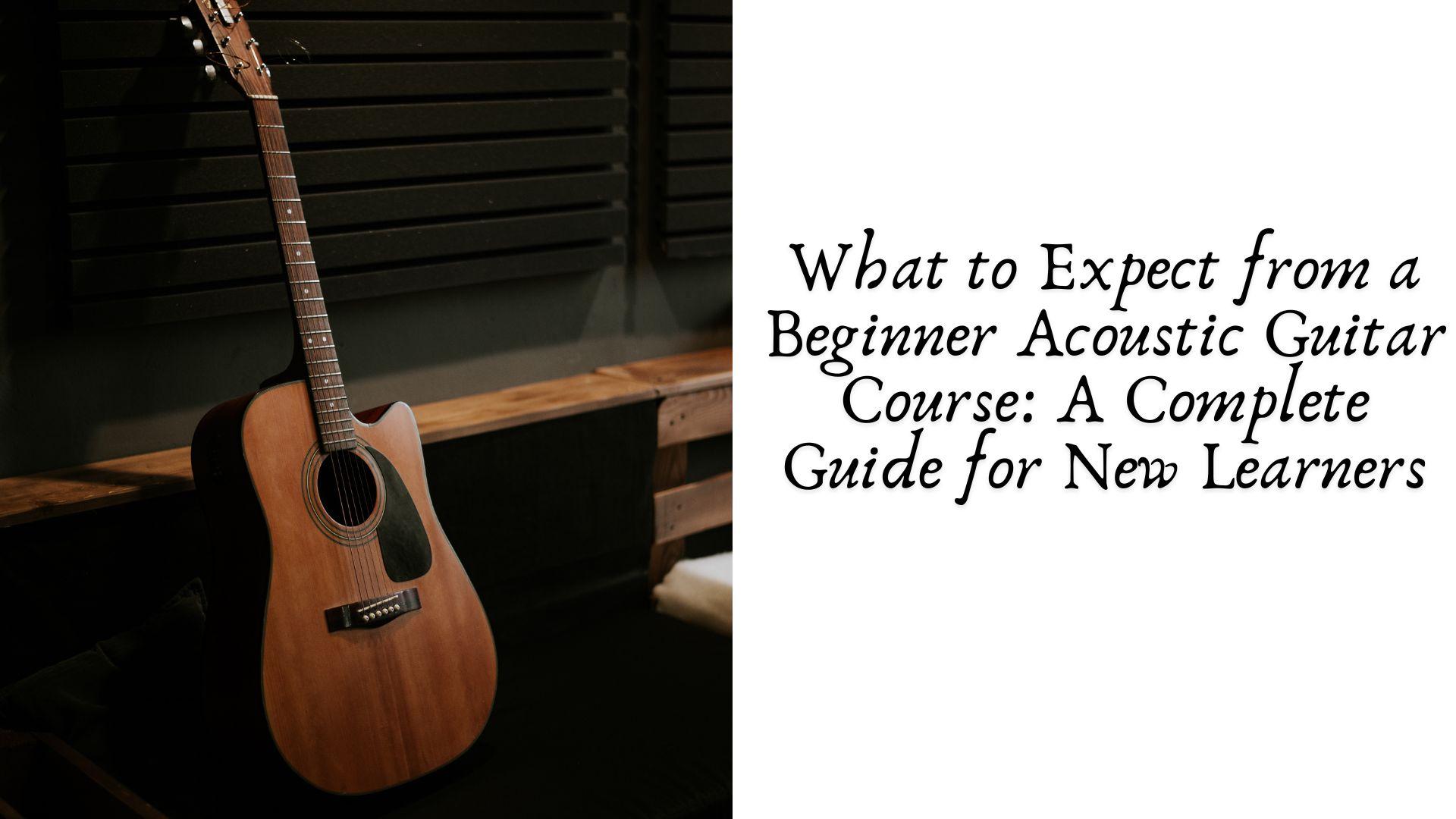What to Expect from a Beginner Acoustic Guitar Course: A Complete Guide for New Learners

Learning to play the acoustic guitar can be one of the most fulfilling and rewarding journeys for any aspiring musician. Whether you're picking up a guitar for the first time or returning after a long break, a beginner acoustic guitar course provides a structured and supportive environment to build foundational skills. This article will explore what you can expect from such a course — including the skills you’ll develop, the tools you’ll need, and how the learning process typically unfolds.
Introduction to the Guitar: Knowing Your Instrument
The first few sessions of a beginner acoustic guitar course typically begin with familiarizing students with the instrument itself. You'll learn:
-
Parts of the guitar: body, neck, fretboard, strings, sound hole, bridge, etc.
-
String names and numbers: E-A-D-G-B-e tuning system.
-
How to hold the guitar properly to prevent strain or discomfort.
-
Tuning the guitar: Often using a clip-on tuner or tuning app.
This foundation ensures that you're comfortable handling your guitar and sets the stage for developing good habits early on.
Basic Music Theory: A Light Introduction
While the focus is on playing, most courses introduce basic music theory concepts relevant to beginners, such as:
-
Understanding the musical alphabet (A to G).
-
Introduction to notes, chords, and scales.
-
Reading chord charts and tablature (tabs) — a beginner-friendly way of notating guitar music.
-
Learning about rhythm and timing (quarter notes, half notes, etc.).
You won’t be bogged down with complex theory, but the essentials help you understand what you’re playing and why it works musically.
Fundamental Guitar Techniques
In a beginner course, you'll begin developing essential techniques, which include:
-
Fretting notes properly to produce clean sound.
-
Strumming patterns: Learning to use a pick or your fingers.
-
Simple fingerpicking patterns.
-
Changing chords smoothly.
Expect to start with basic open chords such as G, C, D, E, A, Em, Am — the building blocks of many popular songs.
Practice Songs and Riffs
Most beginner courses include a selection of easy songs or riffs to help reinforce what you’ve learned. These often include:
-
Famous 3-chord songs like “Horse with No Name” or “Knockin’ on Heaven’s Door.”
-
Simple riffs like the intro to “Smoke on the Water” or “Seven Nation Army.”
-
Strumming-based songs that help you get comfortable playing and singing.
Playing familiar tunes is not only motivating but also a great way to develop muscle memory and ear training.
Developing a Practice Routine
One of the most critical aspects of learning guitar is consistent practice. A good course will help you develop:
-
A daily or weekly practice schedule.
-
Strategies for warming up your fingers and hands.
-
Tips for overcoming frustration or finger pain (very common at first).
-
Ways to track progress and stay motivated.
Most instructors emphasize that even 15–20 minutes of focused daily practice can lead to significant improvements.
Understanding Progress Milestones
As a beginner, it's important to set realistic expectations. Progress doesn’t happen overnight, but a quality course will outline clear goals such as:
-
Playing 5–10 basic open chords comfortably.
-
Learning to switch between chords without pausing.
-
Playing along with a metronome or backing track.
-
Performing a full song from start to finish.
These milestones help you feel a sense of accomplishment and keep you excited to continue learning.
Group vs. Private vs. Online Courses
Beginner acoustic guitar courses are offered in various formats:
-
Group classes: Great for social interaction and learning with peers.
-
Private lessons: Offer one-on-one attention and personalized guidance.
-
Online courses/platforms: Provide flexibility and self-paced learning.
Each option has its pros and cons, and the best choice often depends on your learning style, budget, and schedule.
Tools and Resources You'll Use
Expect to use the following tools and resources during your course:
-
Guitar tuner
-
Capo
-
Picks
-
Guitar strap
-
Music stand
-
Chord charts and tab sheets
-
Practice apps or video tutorials for supplementary learning
Many instructors also recommend using guitar learning apps like Yousician, Fender Play, or Justin Guitar for additional practice.
Overcoming Common Challenges
Beginners often face hurdles like:
-
Finger pain and soreness
-
Buzzing or muted strings
-
Difficulty switching chords
-
Staying in rhythm
A good instructor or course will address these issues directly, offering practical solutions and encouragement to push through the early obstacles.
Conclusion: Embrace the Journey
A beginner acoustic guitar course is more than just learning an instrument — it’s the beginning of a creative and joyful pursuit. While progress may feel slow at times, every small improvement is a step forward. With patience, consistent practice, and the right guidance, you'll soon find yourself strumming songs, playing chords fluidly, and maybe even composing your own music.
So, bring your passion, curiosity, and a little discipline — and let your musical journey begin with confidence.
- Art
- Causes
- Crafts
- Dance
- Drinks
- Film
- Fitness
- Food
- Jogos
- Gardening
- Health
- Início
- Literature
- Music
- Networking
- Outro
- Party
- Religion
- Shopping
- Sports
- Theater
- Wellness


